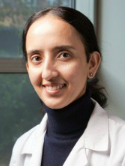Salivary gland side effects commonly develop several weeks after initial radioactive iodine ablation Journal Article
| Authors: | Grewal, R. K.; Larson, S. M.; Pentlow, C. E.; Pentlow, K. S.; Gonen, M.; Qualey, R.; Natbony, L.; Tuttle, R. M. |
| Article Title: | Salivary gland side effects commonly develop several weeks after initial radioactive iodine ablation |
| Abstract: | Salivary gland side effects (SSEs) can be a source of significant morbidity in thyroid cancer patients receiving radioactive iodine (RAI) for remnant ablation or therapy. However, the incidence, time course, and ultimate resolution of SSEs that develop in the first few months after a single administered activity of RAI for remnant ablation has not be adequately defined. Methods: We retrospectively reviewed the clinical records of patients after RAI remnant ablation (RRA) to determine the incidence of salivary gland-related side effects reported within the first year of RRA, the dose-response relationship between administered activity and specific SSEs, and the incidence of specific SSEs based on the method of preparation for remnant ablation (recombinant human thyroid-stimulating hormone [rhTSH] vs. traditional thyroid hormone withdrawal [THW]). Results: SSEs were reported within the first year of RAI ablation in 39% of a cohort of 262 patients (66% women, 93% papillary thyroid cancer; median dose, 5,217 MBq [141 mCi]). Persistent side effects were noted after a median of 7 y in 5% or less of the entire cohort. However, when side effects developed in patients during the first year, the incidence of persistence of the symptom at last follow-up ranged from 5% to 13%. A statistically significant dose response was seen between administered activity of RAI and development of salivary gland swelling (P = 0.001, logistic dose-response curve) but not with dry mouth (P = 0.63), altered taste (P = 0.27), or salivary gland pain (P = 0.152). SSEs developed in 14% of patients receiving administered activities of 1,110 MBq (30 mCi); administered activities of 2,775 MBq (75 mCi) or more were associated with symptoms in 40% of patients (P = 0.046). Despite receiving a statistically higher administered activity (5,661 ± 2,997 MBq [153 ± 81 mCi] for THW vs. 4,958 ± 2,294 MBq [134 ± 62 mCi] for rhTSH), THW was associated with a lower rate of salivary gland swelling than the rhTSH preparation (20% vs. 10%; P = 0.017), without differences in the development of dry mouth, altered taste, or salivary gland pain. Conclusion: Although SSEs occurred in 39% of patients after routine RRA, they were usually transient, so that the overall incidence of persistent side effects at a median follow-up of 7 y was only 5%. Even though the risk for persistent side effects is rather small, these data do emphasize the need to select patients carefully for RRA who are thought to be at moderate to high risk for recurrence and to use the minimally effective dose of RAI activity, in an attempt to maximize the potential benefit while minimizing the risk for adverse events for an individual patient. Copyright © 2009 by the Society of Nuclear Medicine, Inc. |
| Keywords: | adult; major clinical study; dose response; drug withdrawal; follow up; incidence; morbidity; medical record review; retrospective study; high risk patient; risk assessment; symptom; statistical significance; iodine 131; nonsteroid antiinflammatory agent; radioactivity; taste disorder; xerostomia; glucocorticoid; recurrent disease; salivary gland disease; salivary gland; thyroid cancer; levothyroxine; toxicities; liothyronine; recombinant thyrotropin; thyroid hormone; salivary gland pain; salivary gland swelling; technique; thyroid remnant ablation |
| Journal Title: | Journal of Nuclear Medicine |
| Volume: | 50 |
| Issue: | 10 |
| ISSN: | 0161-5505 |
| Publisher: | Society of Nuclear Medicine |
| Date Published: | 2009-10-01 |
| Start Page: | 1605 |
| End Page: | 1610 |
| Language: | English |
| DOI: | 10.2967/jnumed.108.061382 |
| PROVIDER: | scopus |
| PUBMED: | 19759114 |
| DOI/URL: | |
| Notes: | --- - "Cited By (since 1996): 2" - "Export Date: 30 November 2010" - "CODEN: JNMEA" - "Source: Scopus" |
Altmetric
Citation Impact
BMJ Impact Analytics
Related MSK Work







